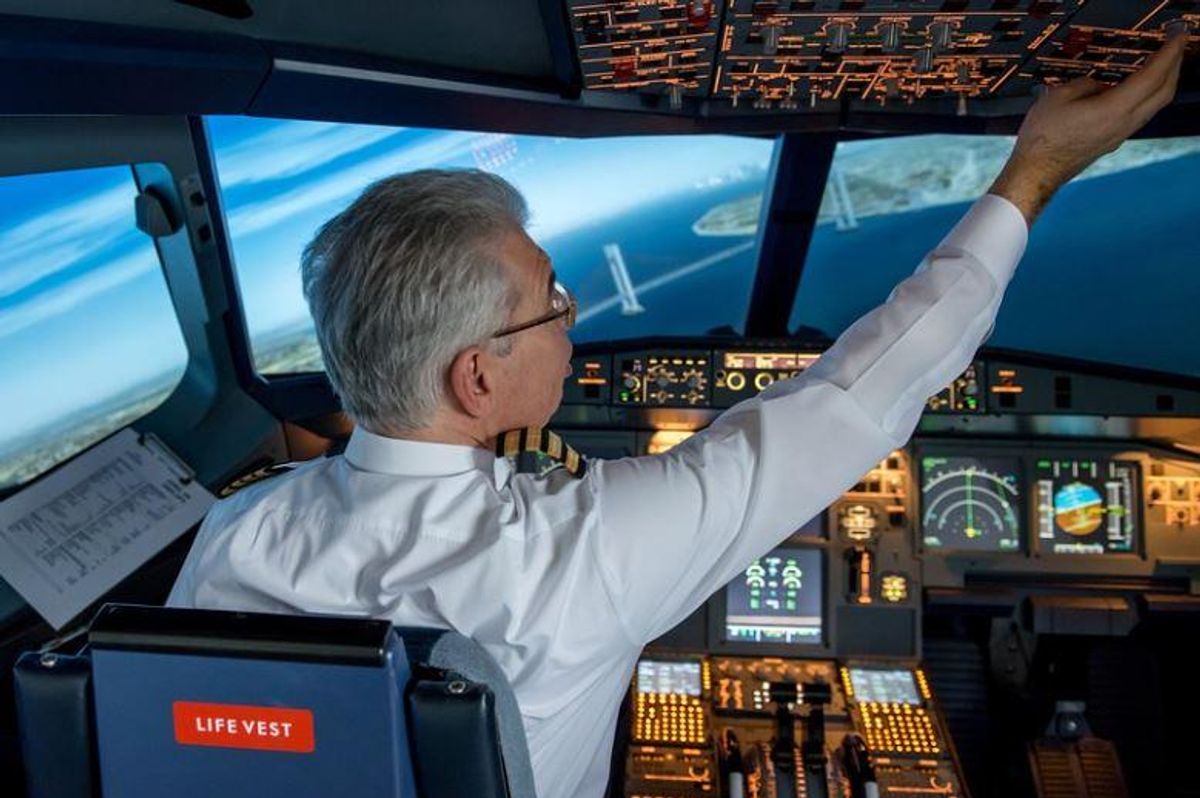Experienced 747 pilot reveals the worst time of day for anxious people to fly
The less turbulance, the better.

A pilot flying over New York City.
It’s normal to get a little nervous before boarding an airplane. Hurtling through the air at 600 miles per hour, 30,000 feet off the ground isn't a natural human experience. According to Stratos Jet Charters, up to 40% of all people experience some anxiety when it comes to flying.
The good news is that they have little reason to be afraid. Only one in 20 million flights result in a passenger’s death. Whereas the average American's lifetime odds of dying in a car crash are 1 in 101.
I think that solves the "Should we fly or drive?" debate.
But if you still are more afraid of traveling on a plane than the ride in a taxi to the airport, here’s something to ease your mind. If you want to avoid turbulence, book a flight in the morning. “The heating of the ground later causes bumpier air, and it’s much more likely to thunderstorm in the afternoon,” Jerry Johnson, a pilot from Los Angeles, told Reader's Digest.
If you experience turbulence, there’s no need to worry; planes are designed to handle changes in air currents. The only time to be concerned about turbulence is if you’re standing on the plane and could fall while walking back to your seat or waiting in line for the bathroom.
Travelers looking for the smoothest place to sit on a plane should choose a seat near a wing. “The bumpiest place to sit is in the back. A plane is like a seesaw. If you’re in the middle, you don’t move as much,” pilot Patrick Smith told Reader's Digest.
On the ultra-rare occasion of a plane crash, the safest spot to sit is the emergency exit. "Always offer to sit by the emergency exits because—as long as you're able-bodied—I think probably the best seats are the ones closest to the exits,” 747 pilot Nick Eades told LADbible.
"Then if there is an abandoned take-off [or] there is catastrophic failure, you can either help people out or be the first to get out of the airplane yourself. You're in a very good position,” Eades continued. "It's common sense, if you think about it."
If the anxiety you feel around flying has more to do with cost than personal safety, a scientific study found that prices are usually at their lowest three weeks to two months before a flight, with average prices hitting rock bottom 44 days before departure.
“Prices will be lowest three to six weeks before your trip, rising rapidly in the last three weeks before departure date,” deal-finding site Hopper told Forbes.
But if you’re going to book your flight outside of that window, sooner is a lot worse than farther out. “Travelers who wait to book their flights within three weeks of travel dates can risk paying double, or even triple the amount,” CheapAir.com wrote in its Annual Flight Report. “If you have an emergency or unexpected trip, you’ll likely pay about $150 more than you would if you shopped in the prime booking window.”





 Dexters Laboratory What A Fine Day For Science GIF
Dexters Laboratory What A Fine Day For Science GIF The bread doesn't lie. Facebook/Jaralee Metcalf
The bread doesn't lie. Facebook/Jaralee Metcalf Rihanna Nails GIF
Rihanna Nails GIF A Gen X text convo with Gen ZPhoto credit: Annie Reneau
A Gen X text convo with Gen ZPhoto credit: Annie Reneau Oh Yeah Mic Drop GIF by Taylor Bisciotti
Oh Yeah Mic Drop GIF by Taylor Bisciotti